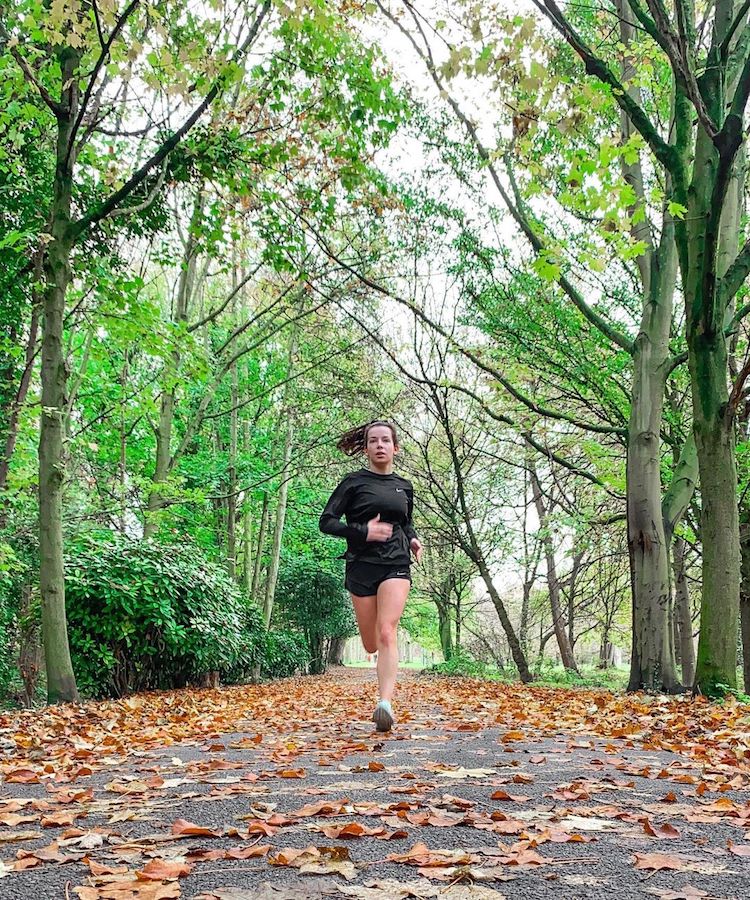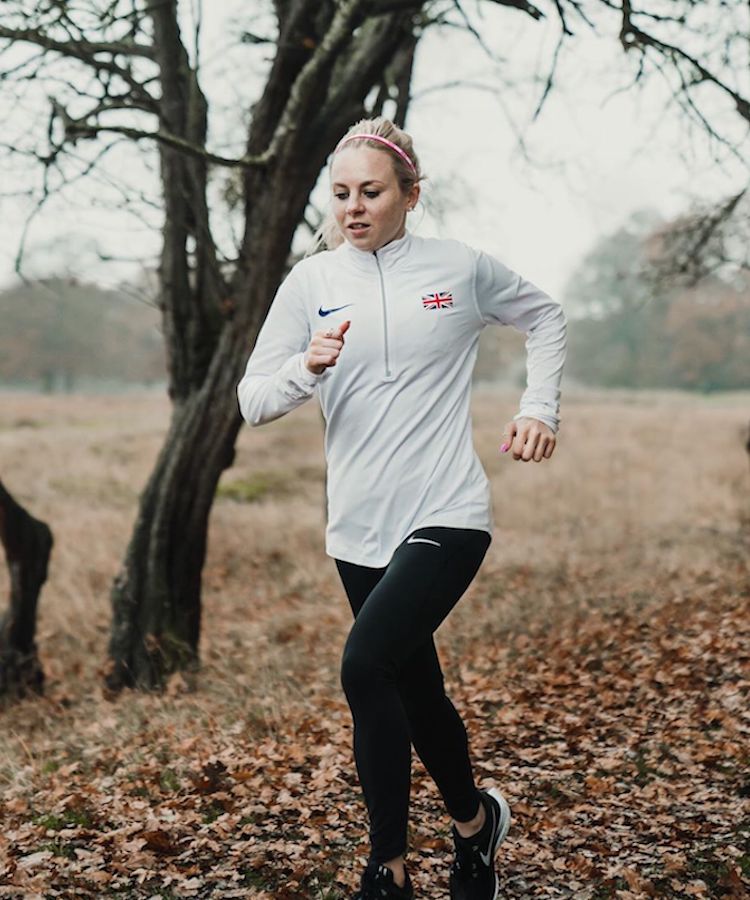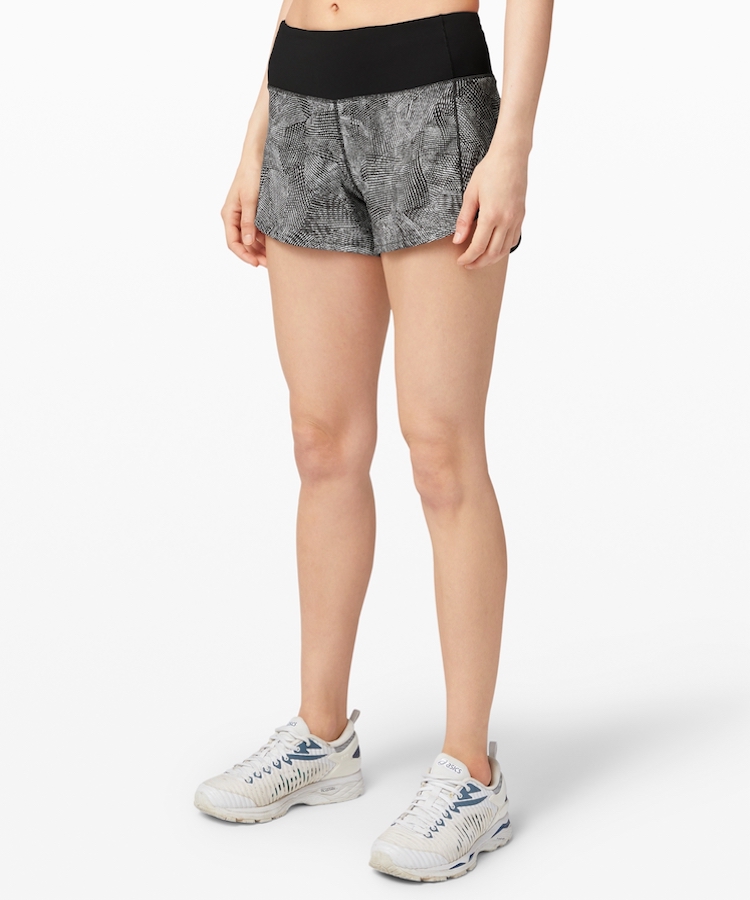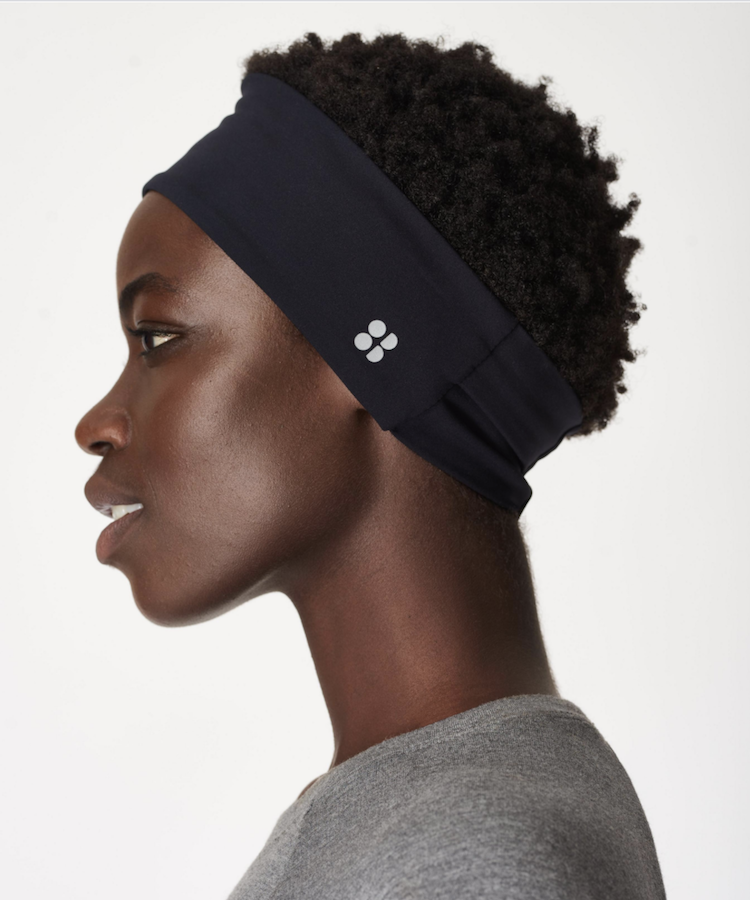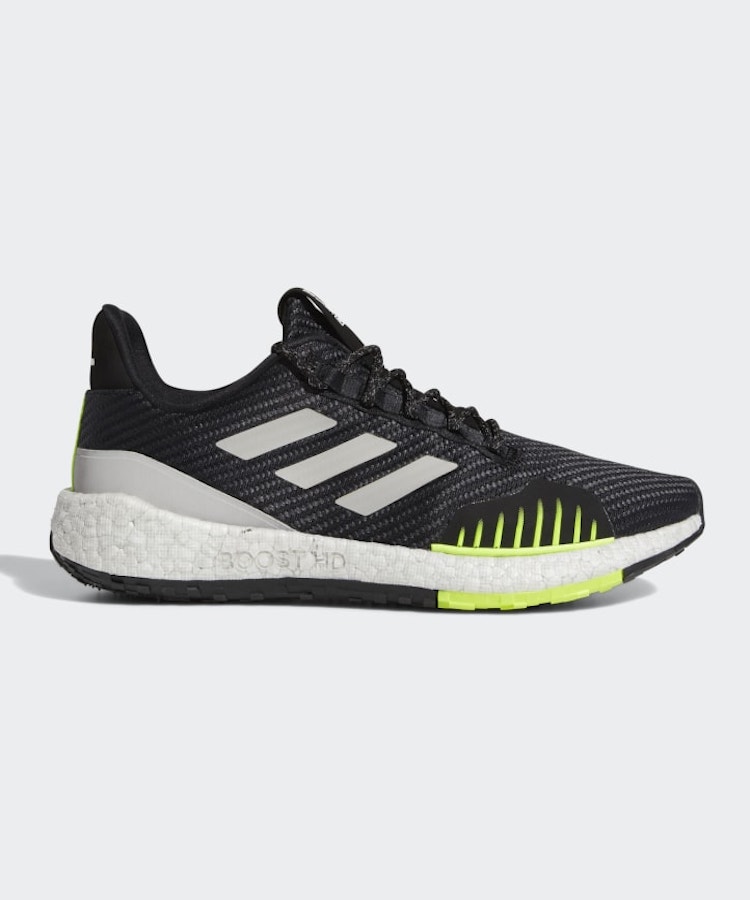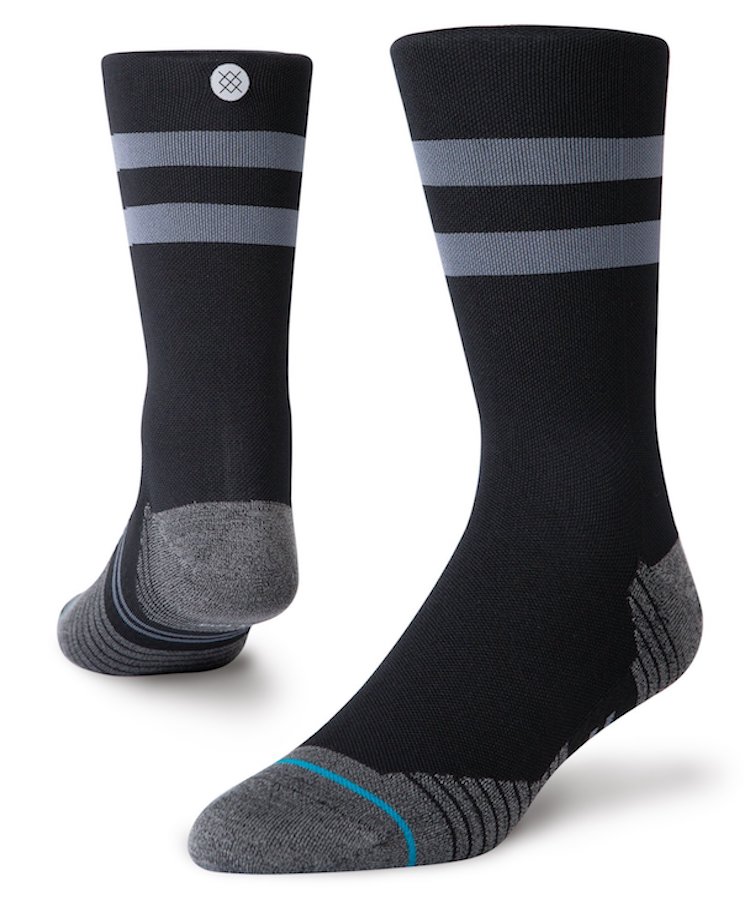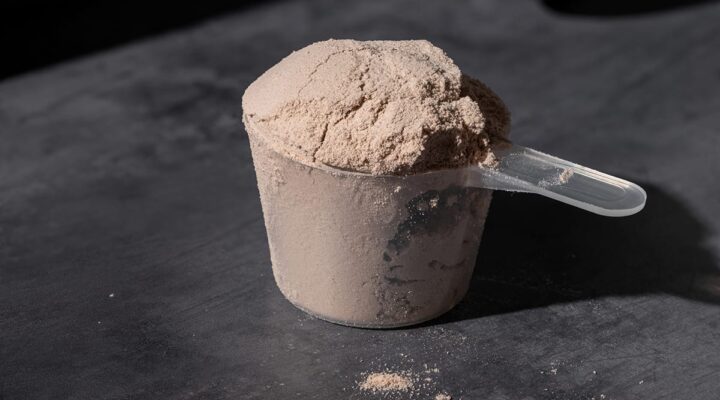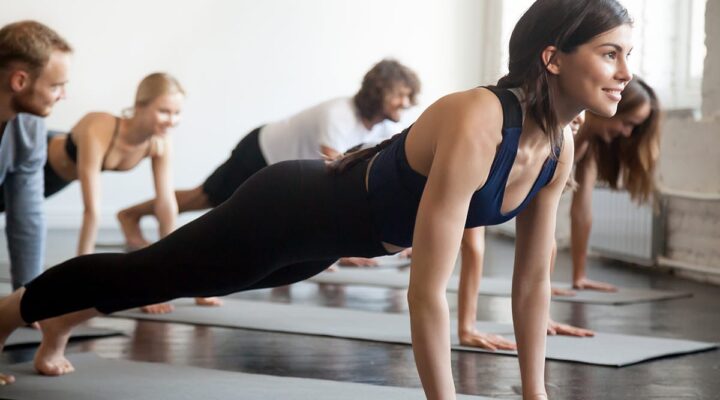The Complete Guide To Running During the Winter Months
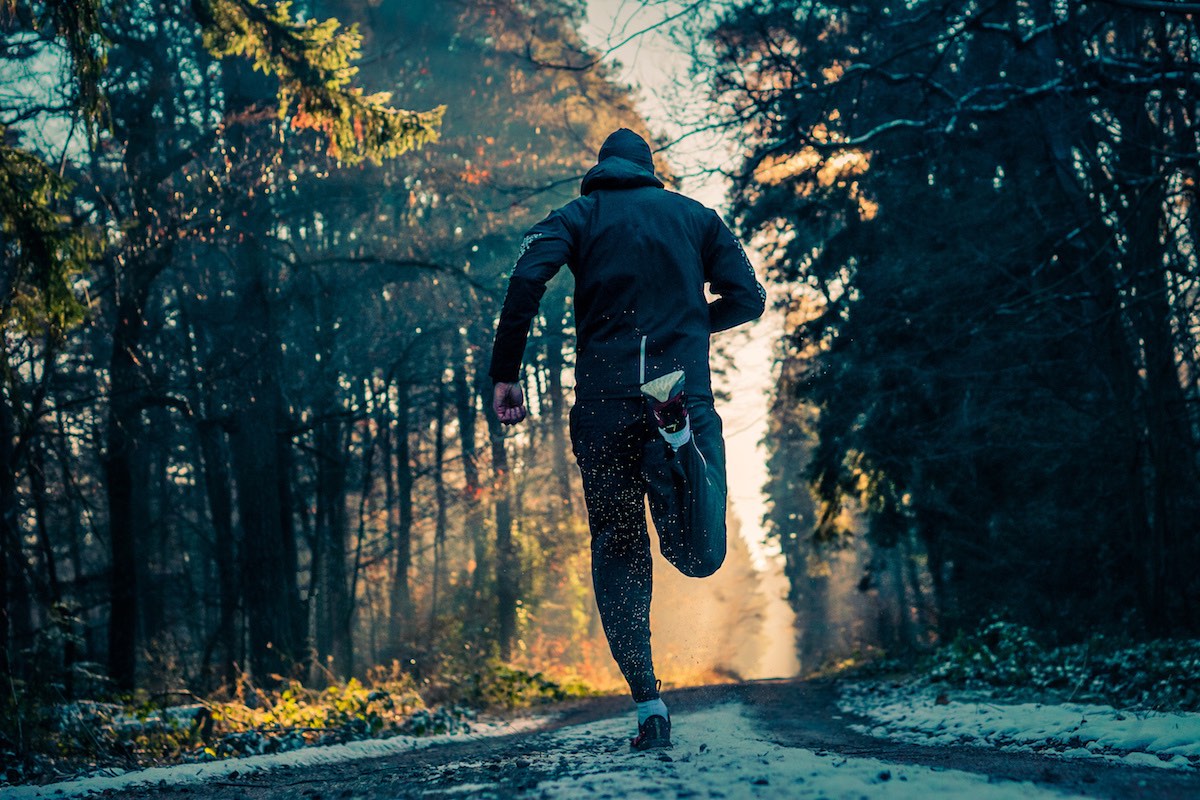
According to a report by Brand Watch, 207,000 people shared their running stats on social media in March 2020 – more than January and February combined. Not just that, but there was a 92 percent increase in downloads for the NHS’ ‘Couch to 5k’ app. Simply put, people were seriously into running during that first coronavirus lockdown.
Now, with a second lockdown underway, many runners are lacing up and getting the miles done in slightly chillier temperatures. But freezing temperatures, pitch-black evenings, and icy roads don’t make for the most enticing of conditions. You probably know that once you get going it’ll be a joy, but hauling yourself out of the warm embrace of your duvet to get to that point, quite frankly, isn’t.
Feeling unmotivated then or want some top tips from the pros on how to transition from summer runner to winter warrior? We’ve spoken to running coach and personal trainer Lillie Bleasdale of Passa Training and the third fastest British female marathon runner in history, Charlotte Purdue of Purdue Performance.
Below, they share their words of wisdom on how to warm up and stay safe as it gets darker, earlier. Plus, kit yourself out with the best winter running gear with their winter layers buying guide. Keep reading, and remember: run strong.
How Does Winter Running Differ From Summer Running?
Beyond the obvious? That is, it’s cold, it’s wet, and it’s oh-so-hard to get out of bed. There are many psychological and environmental barriers for runners to overcome during the winter months of the year. “The shortening of daylight hours, the decrease in temperature and the increase in wetter weather are all environmental differences which make it a little more difficult to get out the door,” Bleasdale explains.
But how does winter running affect you physically, and does your body react in the same way as it does during sunnier months? Apparently not, according to Bleasdale. “Some studies suggest that winter running should be easier as an increase in thermal sensation levels leads to a higher level of comfort and ability to consistently sustain their efforts,” she explains.
- Lillie Bleasdale
- Charlotte Purdue
Considering sacking off your morning run? Don’t. “Sure, the winter months may be dark and cold, but they’re vital for keeping a good base fitness for the upcoming races in the spring and summer months,” explains Purdue. Dig deep and work on improving your mental endurance, too, recommend the pair. That way you’re improving both your physical and mental health.
Should Runners Consider Switching Up Their Routine If They Normally Run In The Evening?
The most important thing about your fitness routine is it’s individual to you and your daily schedule, says Bleasdale. “If, like me, you struggle with mornings and running in the dark evenings just feels a little rubbish, then moving your runs to lunchtime could work,” she suggests.
Alternatively, switching out your evening runs for miles on the treadmill could be an easy way to make sure you’re staying safe. “If you have access to a treadmill, switching it up a few times a week is an option,” Purdue explains. Still keen to run late at night?
Make sure you’ve checked all of these off before leaving:
- Are you running a safe route?
- Are you running a well-lit route?
- Are you wearing high vis or reflective gear?
- Do you have a head torch or phone light?
- Is your phone well charged and will there be service on your route? – Does anyone know you are going for a run?
- Are you able to share your live location while running?
If you answer no to any of these, it might be worth postponing.

Your Winter Running Warm-Up
So we’ve managed to convince you to get out and brace the colder temps. That’s great news. But first things first: it’s time to warm-up. This is even more important during the colder months as, if you don’t, you’re at a much higher risk of injury. Think about it – the colder and stiffer your muscles are going into a workout, the more likely they are to run into difficulty.
Why is warming up so important, apart from to prevent injury? “By priming the biomechanical pathways of the body, you’ll help to enhance the power your muscles can exert during any runs, equalling better (and speedier) results,” explains Bleasdale.
Not sure how to warm-up? Let the experts help. “Dynamic warm-up stretches are best,” Bleasdale shares. Her go-to moves are walking lunges, hamstring sweeps, and plyometric high knees.
Similarly, starting your run with a slow, steady pace will do the trick, according to Purdue. “This is the easiest way to make sure your muscles are warm before you start to push the pace at all,” she shares.
The best way to know you’re warm? When you start to forget that you’re even running.
How To Manage The Wind, Cold, Sleet, Snow Or Rain?
Sadly, we’re pretty used to ever-changing weather in the UK. But how do you know whether it’s worth risking a run or not? “To put it simply; if the conditions don’t seem safe, then don’t risk the run. If they seem bearable, then make sure to dress for what you’re about to face,” Bleasdale warns.
Lillie always goes for a waterproof jacket and a cap in the rain, and lighter layers, like gloves, a headband, and a rainproof jacket for cold weather. Make sure these are items you can take off and carry if you get too warm.
The right gear really will serve you here – as above, making sure you’re wearing running trainers with proper grip is important. “Managing the conditions can be tough, but dressing for the conditions is key,” stresses Purdue.
Keen to shop the expert’s top picks? Scroll to the bottom.
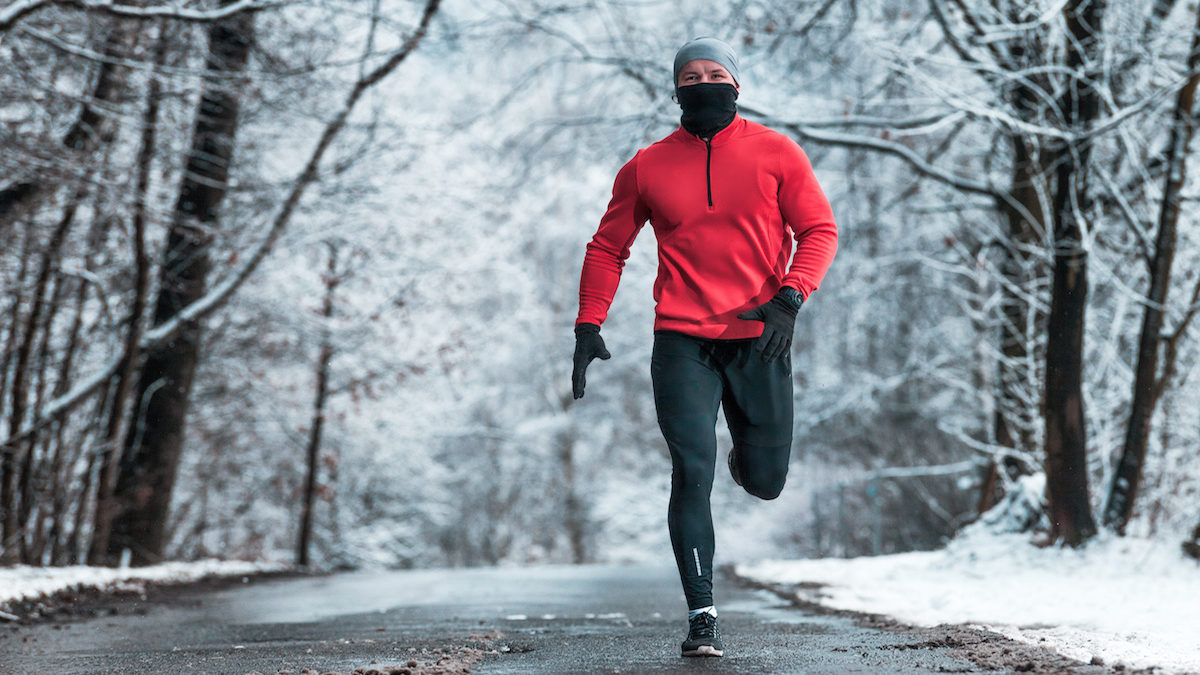
Motivation Trouble?
Don’t worry if you struggle a little with motivation right now. It’s been an unprecedented year, after all, so it’s important to go easy on yourself.
“Why not link up with a local running chum at a social distance, when it’s allowed? The threat of having to send the bail text message will be enough to get you out the door,” explains Bleasdale. Alternatively, she recommends finding a virtual race (virtual marathons are all the rage currently) or setting yourself a mileage goal for the next week or month. “It’ll put a spring in your step when heading out and help to change up training and keep it dynamic.”
Purdue, on the other hand, recommends you focus on the end goal when you need a little push. “Remind yourself that the winter miles will pay off in the summer months,” she shares.
Your Winter Layers Buying Guide
So, you’re nearly all set, all you need know it the right kit. Layering is key when running in colder weather as it helps to regulate the body temperature, explains Bleasdale. “This is important, especially if you’re newer to running and aren’t quite sure how many layers you need to feel comfortable”.
Remember, if you get too hot, then you can always remove a layer and tie it around your waist; meaning the lighter the layer, the better.
Lillie and Charlotte’s picks:
Lululemon Speed Up MR Shorts
Perfect for holding and concealing valuables when out on the run, these shorts come in a range of bright colours. How much? £48.00
Sweaty Betty Power Headband
This headband is great for keeping the ears toasty on a windy day. How much? £10
Nike Miler Top
Long-sleeved but light, this tee is perfect for layering during the cold weather. How much? £31.95
Adidas Pulseboost Winterised HD Trainers
These running shoes offer a fantastic grip for all winter terrains. How much? £64.99
Stance Feel360 Run Sock
Great for protecting the feet from blisters if they get wet during colder weather. How much? £12.90
Nike Aeroloft Jacket
It’s slick, futuristic-looking jacket is both reflective and warm. How much? £190.00



